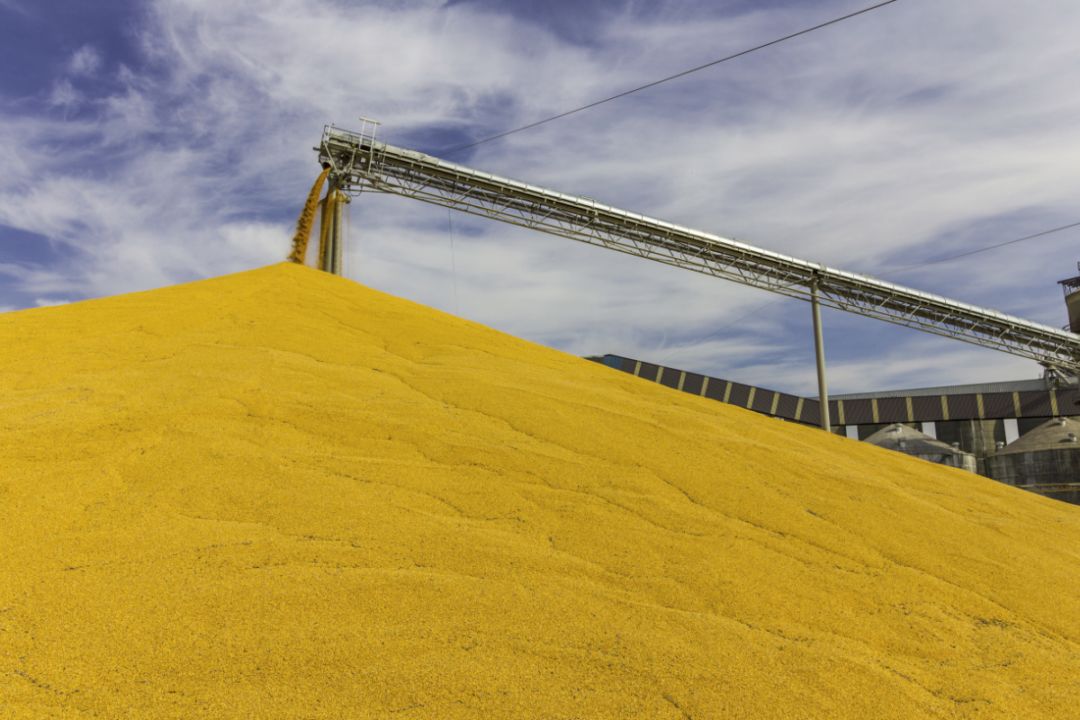Ukraine corn production declines while wheat and sunflower seed forecasts look weak

Historic rainfalls have muddied the harvest of Ukrainian corn fields, leading the US Department of Agriculture (USDA) to predict 4.5 million metric tons fewer crop outputs, a five-year low of 27 million metric tons. However, exports through the Ukraine Grain Initiative sea corridors are going better than expected, which should offer some relief to cereal commodity prices.
Meanwhile, the UN is even less optimistic, forecasting that Ukraine farmers will only be able to deliver 24 million metric tons of corn.
The USDA expects that Ukraine will export 17.5 million metric tons of corn in 2022-2023, up 2 million in a single month and almost doubling its July prediction of nine million metric tons of corn exports.
Exports will hold firm as silos are still close to capacity. The Ukrainian Grain Association has issued calls to the government to prioritize the electricity powering of silos, as the country suffers from constant blackouts due to the targeting of Ukrainian critical infrastructure by Russian military attacks.
For its three most important crops, Ukraine is expected to see decreasing outputs of 16% for Corn, 23% for wheat and 31% for sunflower seed, according to the USDA.
Ukraine farmers have had an extremely challenging year due to Russia’s invasion and extreme weather events, such as a scorching drought in the summer and flooding rains this autumn.
The USDA explains that some farmers are facing increasing financial strain due to direct and indirect losses caused by the armed conflict.
The US launched the Ukraine Agriculture Resilience Initiative (AGRI) in July, planning to deliver US$250 million for the war-torn country’s agriculture sector. The initiative aims to provide over 8,000 farmers with seeds, fertilizer and pesticides.
Other problems are the reported high moisture in corn ears and the difficulty in drying corn due to it being economically unviable for some farmers. Furthermore, the blackouts disrupt the drying of the corn for farmers that use electricity for that task.
This decline in production will be compensated with the country’s bumper stocks. However, new production predictions, supply and distribution note that due to good export numbers exports will drastically drain stocks in the next year.
Wheat stocks are expected to go down from 4.71 million metric tons in July 2022 to 1.46 million metric tons in July 2023. Corn stocks will decrease from 9.88 to 8.34 million metric tons. For barley, reserves are expected to go down from 0.98 to 0.41 million metric tons.
Cereal prices continue to be 50.4% higher than the average prices between 2014 and 2016. However, inflation this year for cereals is 6.3%, as the rally for the commodity prices began in May 2020, according to UN’s FAO.
“World wheat prices registered a 2.8% decline during November, mostly driven by the rejoining of the Russian Federation in the Black Sea Grain Initiative and the extension of the agreement, subdued import demand for supplies from the US due to uncompetitive prices and greater competition in global markets with increased shipments from the Russian Federation,” explains the UN organization.
Russian wheat is key to feeding the world and global food security. The USDA flags that in 2022/2023 Russia will export a record 42 million metric tons.
“While the initial pace of Russian exports has been slow in the current marketing year, its export tax and domestic prices declined in August, making its supplies more competitive with other major exporters,” noted the body in its September wheat outlook.
The UN stated, early in May, that there will be no solution to the food crisis without Russian and Ukrainian produce reaching markets.
Meanwhile, the Ukraine Grain Initiative keeps functioning, with produce leaving from Ukrainian ports, through Turkey and toward global ports.
This December, 57 ships have departed from Ukrainian ports, mostly outbound toward food-secure countries in Europe and Asia. Of the mentioned 57 ships, only five have had Africa as their destination, according to the UN.
During a short-lived suspension of the trade corridor in October, Russia defended that low-income countries have not benefited much from the deal. The country authorities used this as one of the main reasons to pull out of the agreement.
One month before, the Joint Coordination Center (the body that supervises the functioning of the food corridor) revealed that low-income countries received 27% of the food.
UN’s latest data, updated today, puts Spain as the highest winner of the food corridor, receiving 2.4 million metric tons of food, followed by China with 1.9 million metric tons, Turkey with 1.8 million metric tons and Italy with 1.3 million metric tons. The low-income country that has received more produce is Egypt, with 519.700 metric tons.
Read also
Wheat in Southern Brazil Impacted by Dry Weather and Frosts
Oilseed Industry. Leaders and Strategies in the Times of a Great Change
Black Sea & Danube Region: Oilseed and Vegoil Markets Within Ongoing Transfor...
Serbia. The drought will cause extremely high losses for farmers this year
2023/24 Safrinha Corn in Brazil 91% Harvested
Write to us
Our manager will contact you soon



